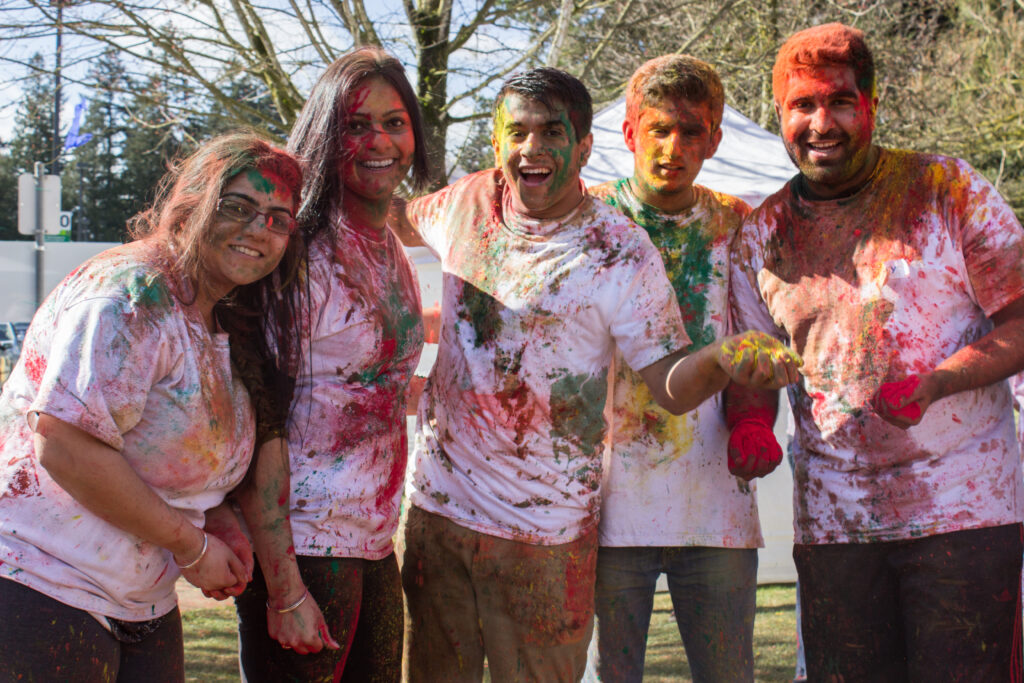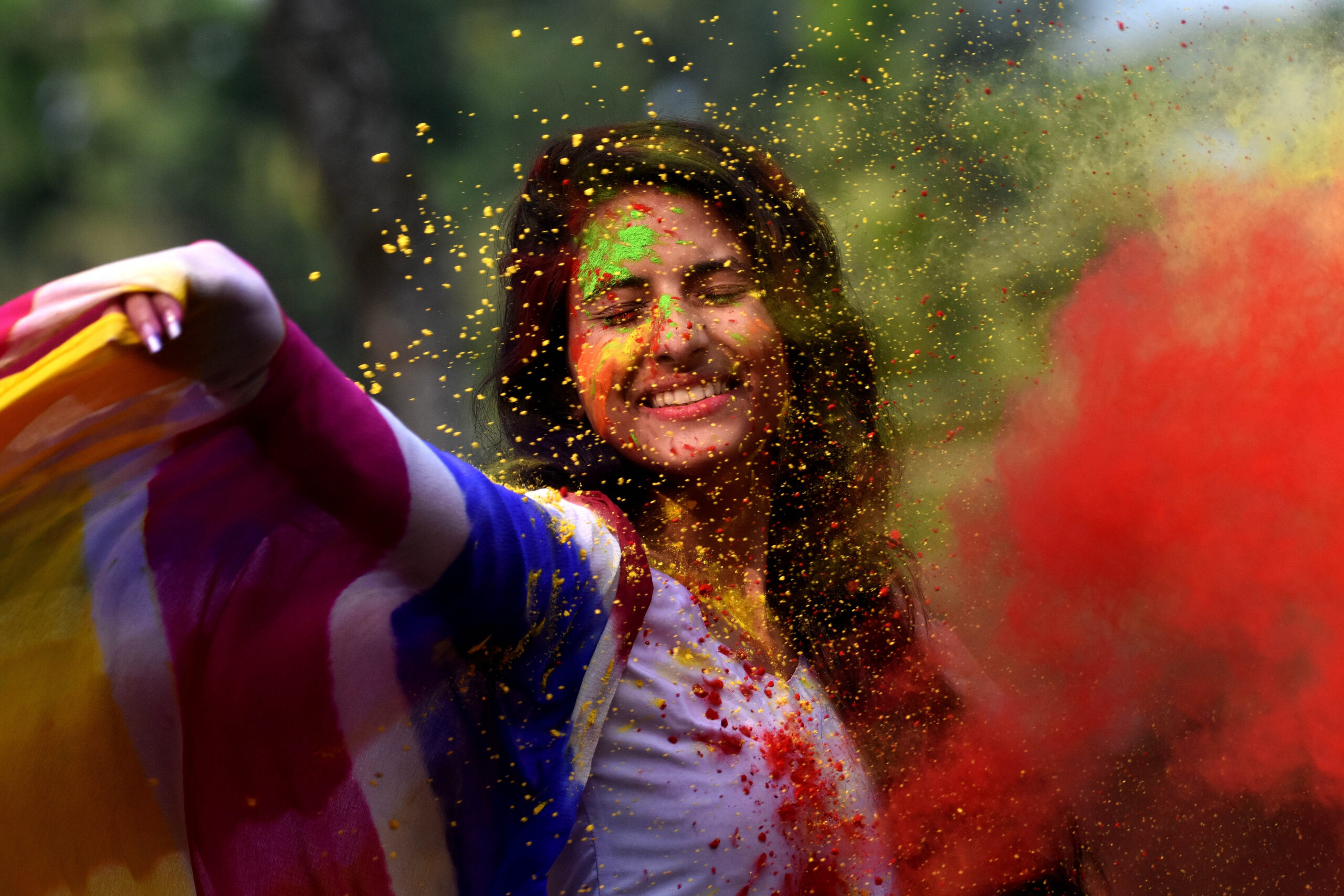Holi Celebration: Embracing Colors, Culture, and Joy – Holi, also known as the festival of colors, is one of the most vibrant and joyous festivals celebrated by Hindus all over the world. It signifies the victory of good over evil and the arrival of spring. Let’s delve deeper into this colorful extravaganza.

Holi, the festival of colors, is one of the most vibrant and joyous celebrations in India. It signifies the victory of good over evil and marks the arrival of spring. Rooted in ancient Hindu mythology, Holi transcends religious boundaries and unites people in a kaleidoscope of colors and merriment.
Significance of Holi
Holi holds a special place in Hindu mythology and folklore. It commemorates the victory of Prahlada over Holika, symbolizing the triumph of devotion and righteousness over malevolence. Additionally, it marks the end of winter and the beginning of the harvest season, bringing forth a sense of renewal and rejuvenation.
Historical Background
The roots of Holi can be traced back to ancient India, with mentions in various scriptures and texts. It is believed to have originated as a festival celebrated by farmers to welcome the spring season and ensure good harvests. Over time, it has evolved into a cultural extravaganza celebrated with great zeal and fervor.
Preparations for Holi
Preparations for Holi begin weeks in advance, with households getting ready for the festivities. People engage in thorough cleaning and decorating of their homes to welcome guests and relatives. Markets bustle with activity as individuals shop for vibrant colors, water guns (pichkaris), and special delicacies like gujiya and thandai.
Rituals and Traditions
The main day of Holi starts with the ritual of Holika Dahan, where bonfires are lit to symbolize the victory of good over evil. The following day is celebrated as Rangwali Holi, where people come together to play with colors, drenching each other in hues of joy and happiness. Water balloon fights and splashing colored water add to the excitement of the day. Delicious food and drinks, especially thandai, are shared among family and friends.
Cultural Significance
Holi transcends religious boundaries and holds significance beyond its mythological origins. The festival brings people from all walks of life together, fostering a sense of unity and brotherhood. The vibrant colors used during Holi symbolize the various hues of life and the importance of embracing diversity.
Holi Across India
While the essence of Holi remains the same across India, different regions have their unique customs and traditions associated with the festival. In North India, cities like Mathura and Vrindavan witness grand celebrations with traditional folk music and dance performances. In the west, states like Gujarat celebrate Holi with the famous ‘Dandiya Raas’, while in the east, West Bengal observes ‘Dol Jatra’ with colorful processions.
Holi Around the World
Holi’s exuberance has transcended geographical boundaries, with communities around the world embracing the festival with open arms. Countries like Nepal, Bangladesh, and Pakistan have their own versions of Holi, adapted to their cultural contexts. In recent years, Holi has gained popularity in Western countries, with vibrant celebrations organized in cities like London, New York, and Sydney.
Modern Trends in Holi Celebrations
In response to environmental concerns, there has been a growing trend towards eco-friendly Holi celebrations. People are opting for natural colors made from flowers and herbs, minimizing the impact on the environment. Additionally, Holi events and parties have become increasingly popular, with organizers incorporating music, dance, and other entertainment activities. Social media platforms play a significant role in spreading the festive spirit, with Holi-themed posts and videos going viral across the internet.
Conclusion
Holi is not just a festival; it’s a celebration of life, love, and togetherness. It brings people closer, transcending barriers of caste, creed, and religion. As we revel in the colors of Holi, let us also remember the values it embodies – unity, compassion, and the triumph of good over evil.
FAQs about Holi Celebration
1. What is the significance of Holika Dahan?
Holika Dahan symbolizes the victory of good over evil and the triumph of devotion over malevolence. It marks the beginning of the Holi festivities.
2. How do people prepare for Holi?
People prepare for Holi by cleaning and decorating their homes, shopping for colors and water guns, and making special delicacies like gujiya and thandai.
3. Are there any regional variations in Holi celebrations?
Yes, Holi is celebrated differently in various regions of India, each with its unique customs and traditions.
4. How has Holi evolved over time?
Holi has evolved from being a simple agricultural festival to a cultural extravaganza celebrated with grandeur and enthusiasm across the globe.
5. What are some modern trends in Holi celebrations?
Eco-friendly Holi celebrations, organized events and parties, and social media influence are some modern trends observed in Holi celebrations today.




